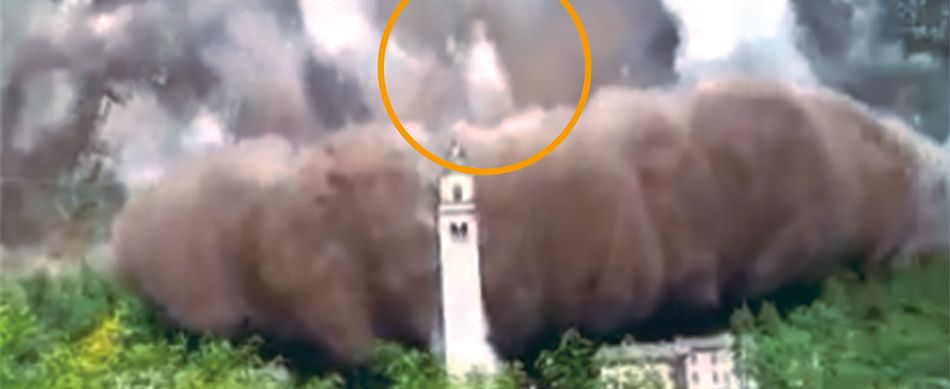The Virgin & the Landslide
OCTOBER 10, 1492 (two days before Columbus reached the New World) along the Spluga Valley in the Italian region of Lombardy, two girls were going through the woods to collect chestnuts. After working for many hours they sat on a boulder to rest. Suddenly, they found themselves blinded by an unusual flash of light, much brighter than the light of the sun. There appeared to them a splendid young lady. She had a veil that descended from her head to the shoulders, and around her were numerous angels. Standing on a rock in front of the two girls, she said, “What are you doing my young girls?” The girls answered, “We are here to collect chestnuts.” And the Lady continued in a gentle tone, “Are you finding enough of them?” “Yes,” they said, “we have enough of them thanks to God and the blessed Virgin.” Smiling, the beautiful Lady said, “It is I, the Virgin Mary.”
The girls knelt, and taking courage asked her, “Our Lady, why have you come to this lonely place?” The Virgin answered with a clear and loving voice, “I go to every place where there are sinners to convert. My Son is disgusted by the behavior of the people, and I myself intervened crying to Him: mercy, mercy, mercy.”
At these words the girls saw fresh blood flowing from the knees and hands of the Lady. The Virgin continued to speak, “Tell sinners to repent and to observe holy days of obligation. Urge people to perform acts of prayer and penance. Only after this will my Son grant my prayer of salvation.”
Immediately afterwards the Holy Virgin Mary disappeared, and a few days afterwards the local people built a wooden chapel on that place which gradually evolved into the beautiful shrine of Gallivaggio. The church was consecrated by the bishop of Como in 1615, in honor of Our Lady, Mother of Mercy. In 1741 the granite boulder on which Our Lady rested her feet was taken into the shrine. Many pilgrims have flocked there over the centuries.
Now let’s jump forward just a bit: 526 years.
At the start of April this year the Geological Monitoring Centre of Lombardy detected considerable rock movements above Gallivaggio, evincing the danger of a landslide of considerable proportions. On the first week of May the Centre highlighted the emergence of an extremely dangerous situation, and the population of 1,500 people had to be evacuated. On May 29, shortly before 4:30pm, around 5,000 cubic meters of rock and earth fell down towards the Shrine of Gallivaggio before suddenly stopping short of the church. The bell-tower was engulfed in a plume of dust, but the Shrine was miraculously unscathed.
Hundreds of people were able to catch the event on their cell phones, and soon the video of the landslide of Gallivaggio went viral. At a certain point, however, something peculiar was noticed: the outline of what resembles the Virgin Mary appears above the bell tower, and this image was also shared around the world.
For the people of Gallivaggio that image is a sign of the protection which Our Lady has guaranteed over her Shrine, the proof that this place has a special place in her heart, and that she has therefore saved it from the fury of Nature.
“What does that image mean?” Fr. Giovanni Illia, a diocesan priest, asks himself. “It is quite a sight to see in those clouds the image of the Regina Mundi, with the crown and scepter. However, we certainly cannot say anything beyond this. We cannot, solely on this foundation, claim that this is a miracle. It is certainly a sign, together with the fact the Shrine itself was spared during the landslide.”
Can we agree with Fr. Illia or do we remain skeptical? In any case I invite you to observe the attached photo or to look at the video through YouTube (tam tam in rete, spunta la Madonna – www.youtube.com/watch?v=y3_V-OzoL6c). In conclusion, I quote St Thomas Aquinas’ famous statement, “To one who has faith, no explanation is necessary. To one without faith, no explanation is possible.”



